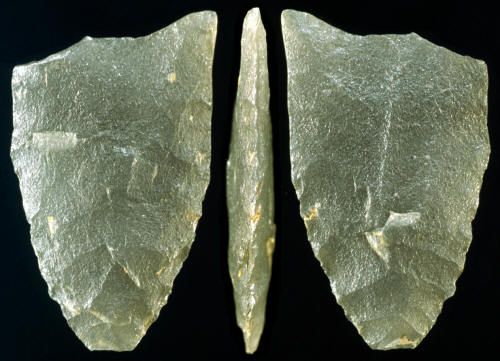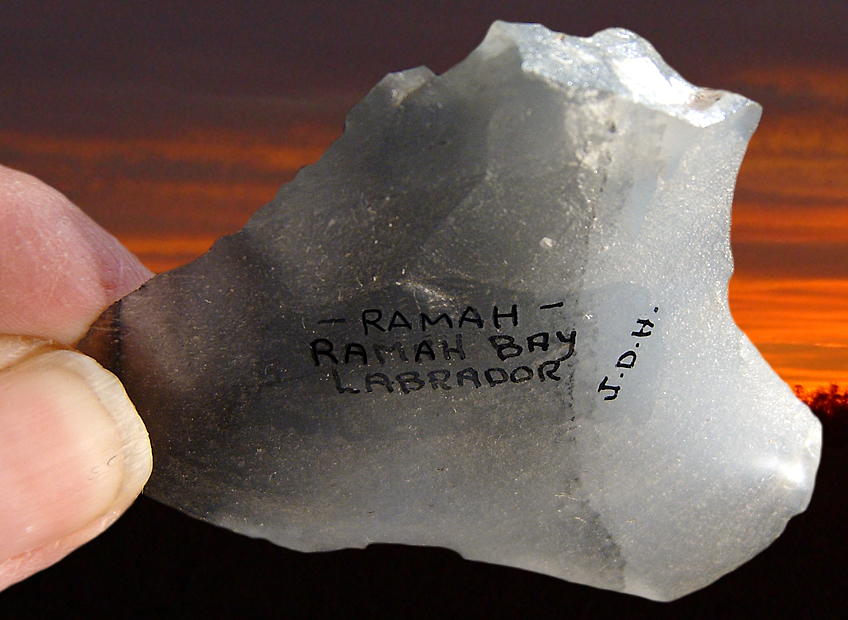|
FLUTED
POINT
This fluted point was
surface collected many years ago by a farmer on a site that is believed to
be somewhere in Franklin County, in southwestern Vermont. It was previously
reported by Stephen Loring in an article called "Paleo-Indian Hunters And
The Champlain Sea: A Presumed Association." This point is most important for
the material it was made from. Stephen Loring (Smithsonian) originally
identified the material as Cheshire quartzite, which is a material that is
found in north central Vermont. But in his more recent analysis of the point
he was able to identify the material as Ramah chert from Labrador. The
analysis was done with the use of lab equipment such as laser spectrograph
or x-ray diffraction. This would mean that the source is considerably
further away than first thought. In fact, this distance rivals many Early
Paleo transports. A straight line from the find area to the known Ramah
quarry along the Labrador coastline at Ramah Bay measures approximately
1,100 miles but a more probable circuitous route might be closer to 1,600 miles. It's
believed that this point is fairly early and dates to at least 10,000 years
ago or more.
This picture shows three views of the original fluted point before the one ear was restored.
|


